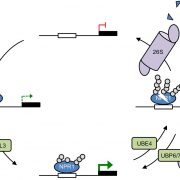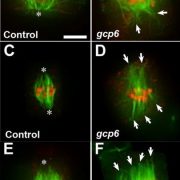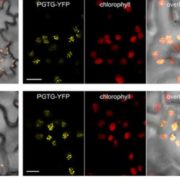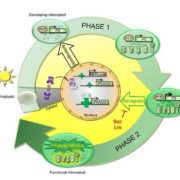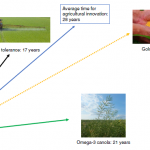Review: Plant immunity, refining the model (Trends in Plant Sci and Curr Opin Plant Biol)
 Interactions between plants and microorganisms occur in many different ways and on many different levels. Scientists have been attracted to this field of research because of the need to identify the agents causing infectious diseases in economically important crops. Models have been developed to describe the coevolution of plants and microbial attack. Models are abstract representations of reality. Their purpose is to reduce the complexity to a manageable and understandable level. A model is, essentially, a microcosm of scientific hypothesis generation. However, as George E.P. BOX said: “Remember that all models are wrong; the practical question is how wrong do they have to be to not be useful”. A valuable used in the study of plant–microbe interactions is called the ‘zigzag’ model, which encompasses two branches of the plant immune system: Pattern-Triggered Immunity and Effector-Triggered Immunity. Thirteen years after the zigzag model was proposed, two reviews, by Van der Burgh and Joosten, and Kanyuka and Judd, take a fresh look at it with the aim to consider how well it fits its intended purpose, and how a model framework to inspire future researchers in the field of plant–microbe interactions might develop. Both reviews propose that the model be revised to emphasize where the microbe is perceived, by either cell-surface immune receptors, leading to apoplast-initiated immune responses, or intracellular immune receptors, leading to cytosol-initiated immune responses. (Summarized by Francesca Resentini) Trends Plant Sci 10.1016/j.tplants.2019.04.009 and Curr Opin Plant Biol 10.1016/j.pbi.2019.02.005
Interactions between plants and microorganisms occur in many different ways and on many different levels. Scientists have been attracted to this field of research because of the need to identify the agents causing infectious diseases in economically important crops. Models have been developed to describe the coevolution of plants and microbial attack. Models are abstract representations of reality. Their purpose is to reduce the complexity to a manageable and understandable level. A model is, essentially, a microcosm of scientific hypothesis generation. However, as George E.P. BOX said: “Remember that all models are wrong; the practical question is how wrong do they have to be to not be useful”. A valuable used in the study of plant–microbe interactions is called the ‘zigzag’ model, which encompasses two branches of the plant immune system: Pattern-Triggered Immunity and Effector-Triggered Immunity. Thirteen years after the zigzag model was proposed, two reviews, by Van der Burgh and Joosten, and Kanyuka and Judd, take a fresh look at it with the aim to consider how well it fits its intended purpose, and how a model framework to inspire future researchers in the field of plant–microbe interactions might develop. Both reviews propose that the model be revised to emphasize where the microbe is perceived, by either cell-surface immune receptors, leading to apoplast-initiated immune responses, or intracellular immune receptors, leading to cytosol-initiated immune responses. (Summarized by Francesca Resentini) Trends Plant Sci 10.1016/j.tplants.2019.04.009 and Curr Opin Plant Biol 10.1016/j.pbi.2019.02.005


